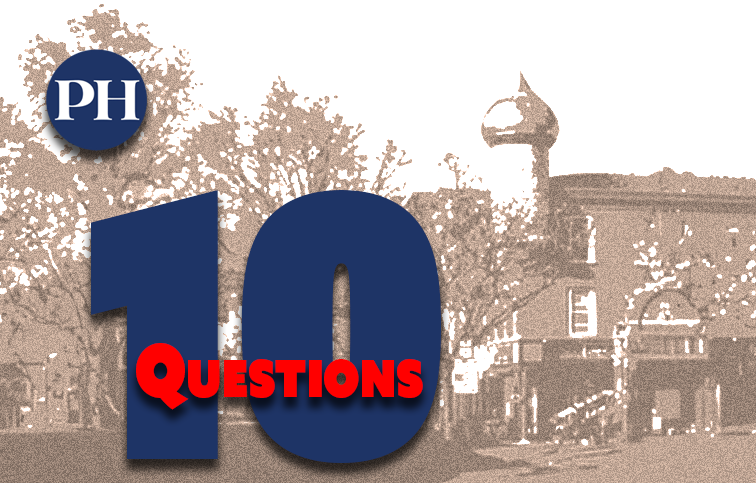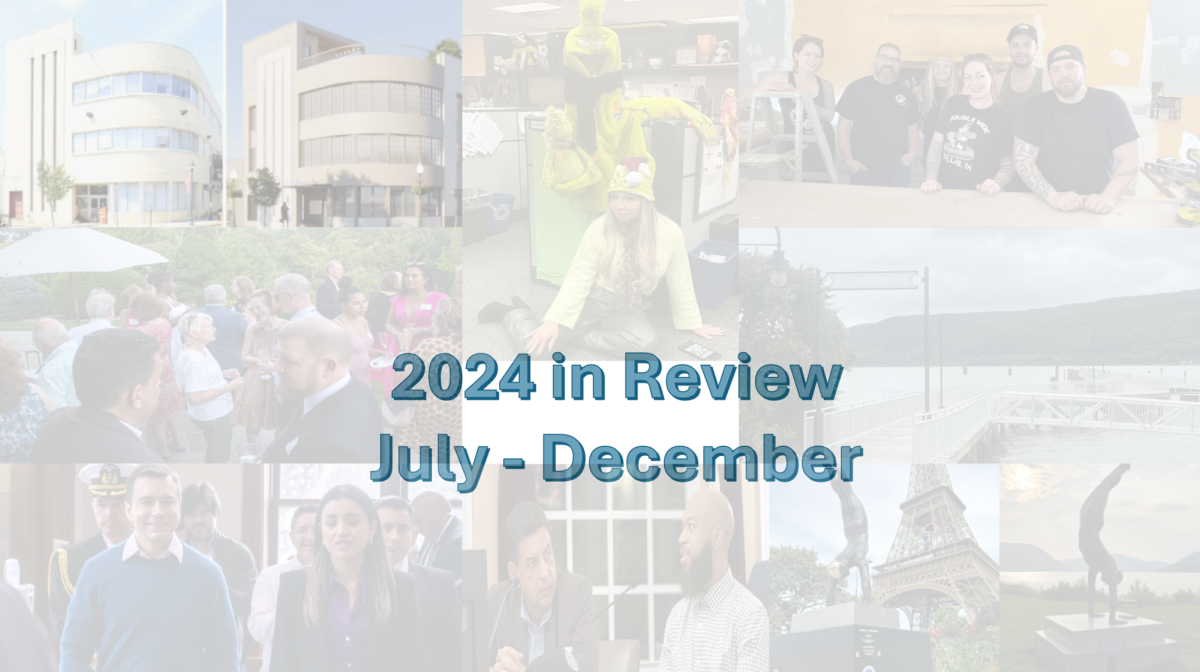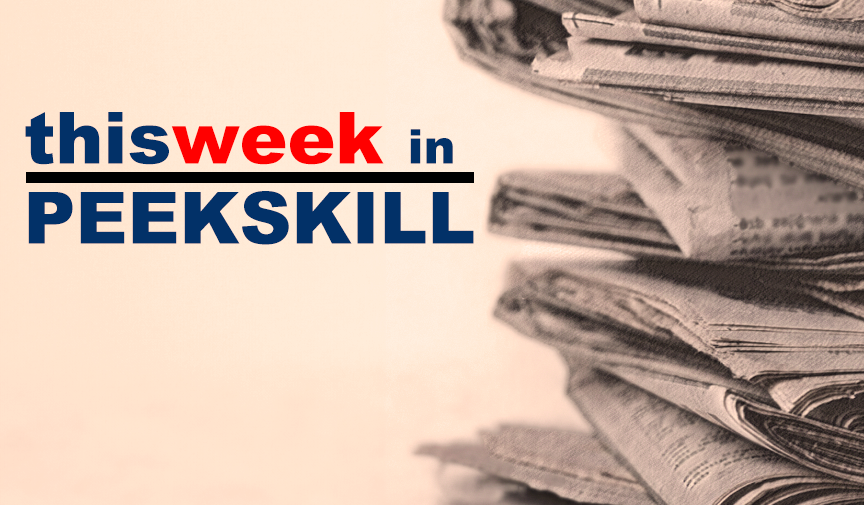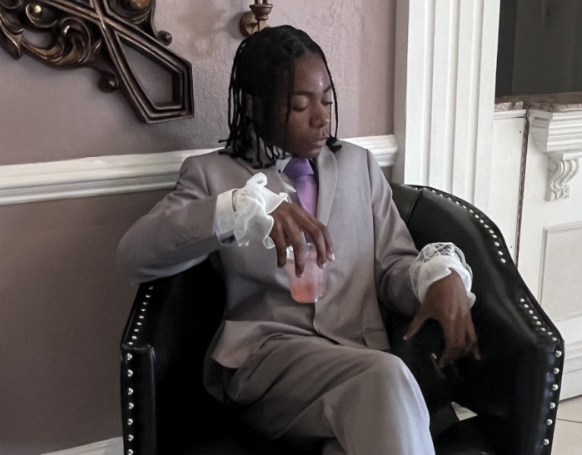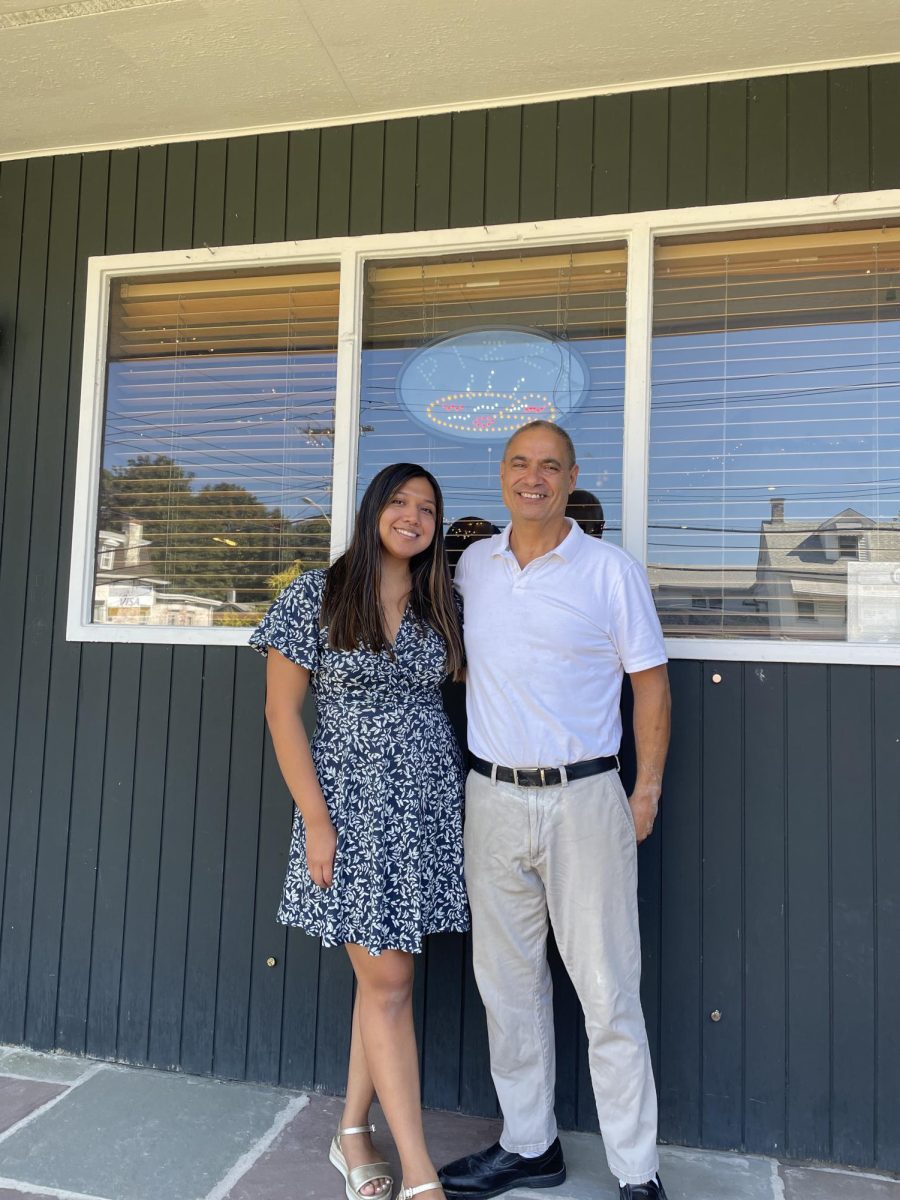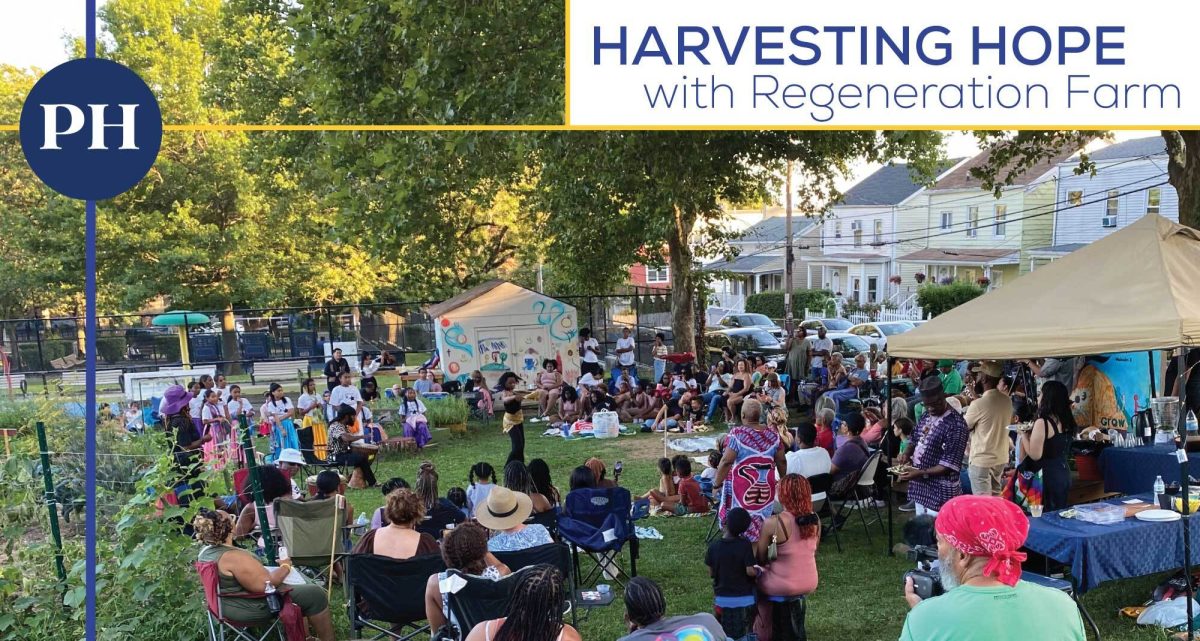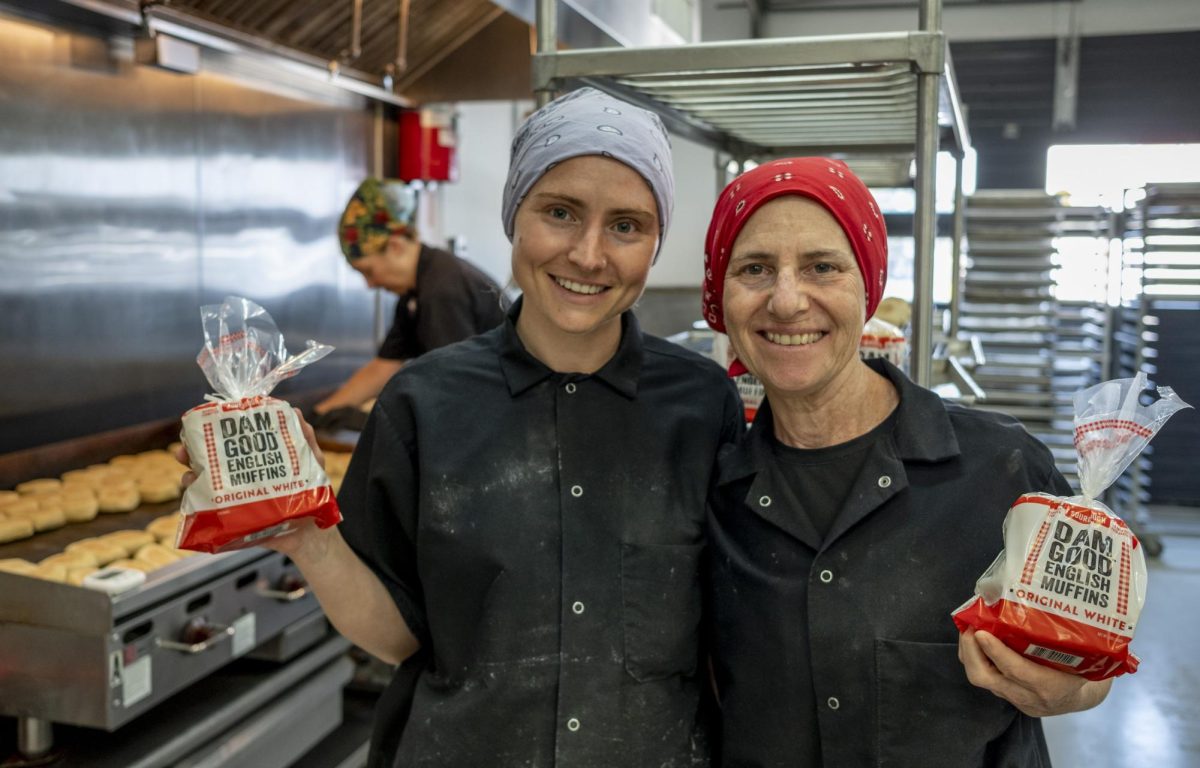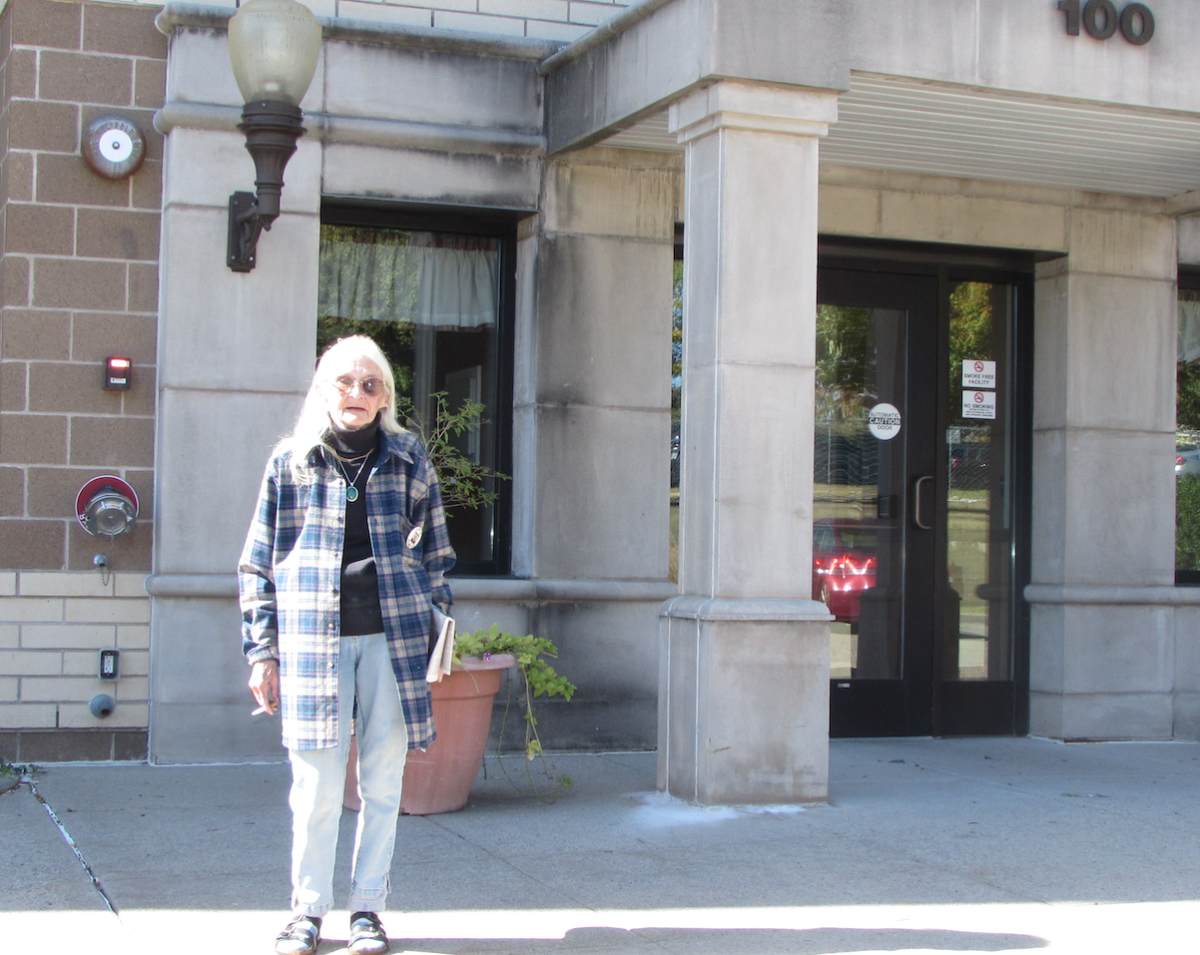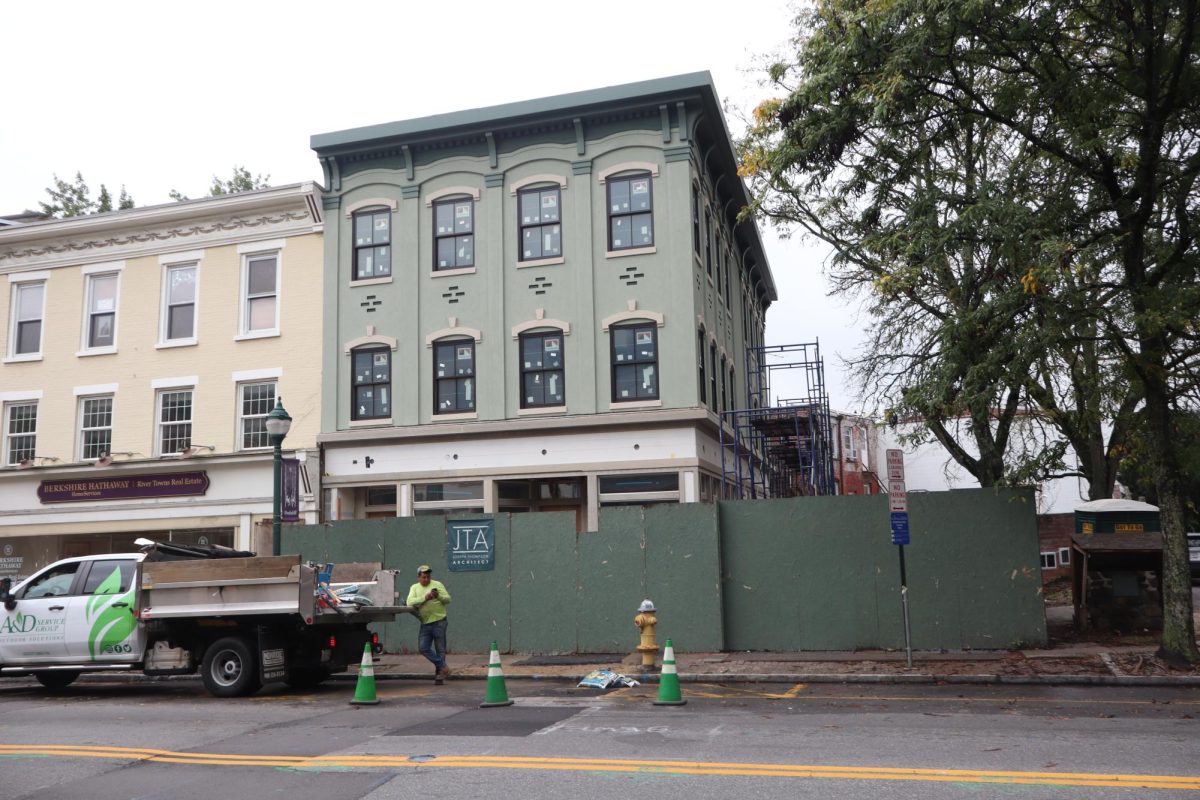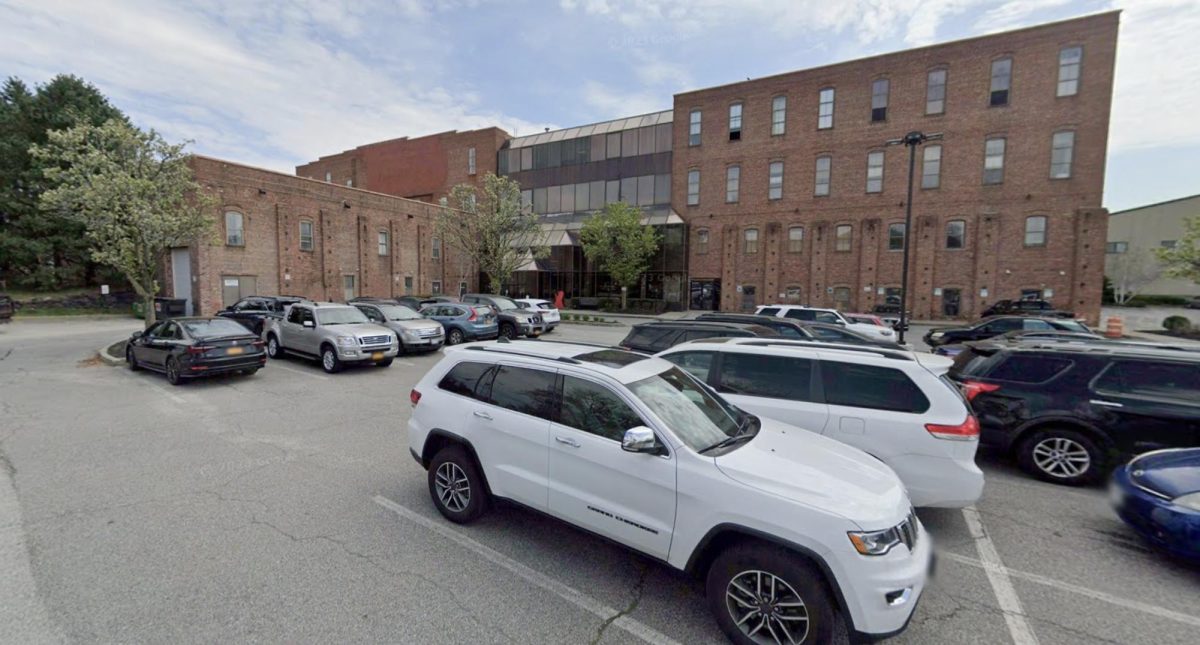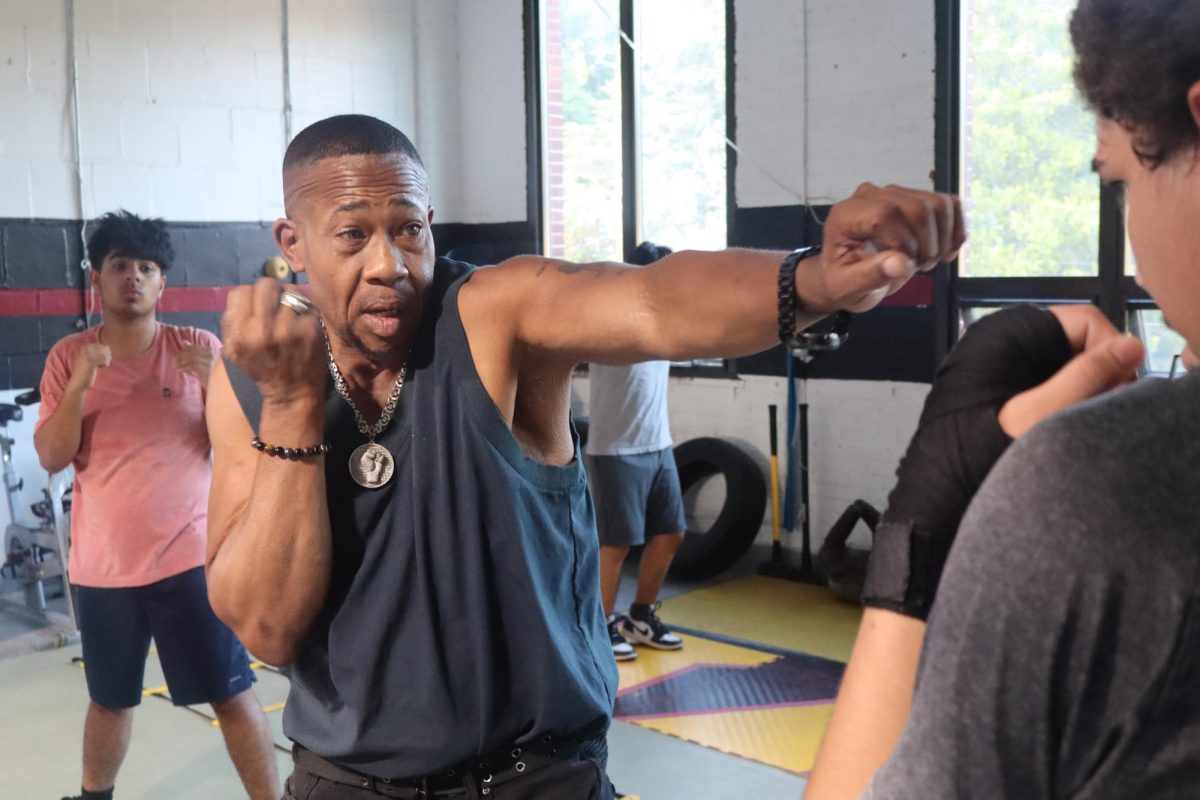Editor’s Note: The Peekskill Herald’s “10 questions …”, column is for readers to know more about those who work in city government, own businesses, and support our city’s development. Today’s column features Scott Hull, a mastering engineer and the owner of Masterdisk Studios.
Masterdisk was originally based in New York City. When did you move the company to Peekskill, and why?
I started with Masterdisk when we were at 16 West 61st Street. It was 1984. I used to commute from Hoboken to Midtown on a motorcycle and park at Columbus Circle. In 1990 we moved to our larger space on 45th Street. That was near the Intrepid Air & Space Museum and the passenger ship terminal. All of the New York music and broadcast facilities were in the West 40s and 50s [streets].
When I took over Masterdisk as owner in 2008 – we were still on West 45th street. But with the upgrades on the West Side – and the northward crawl of Chelsea, Hell’s Kitchen was consumed by high-rise buildings and accompanying high-rise rents. Masterdisk had to move to stay in business. All of the music studios have left midtown. In 2014 I relocated to Peekskill to save the business, and to ease myself into a slightly less hectic lifestyle.
Through the years now, many of my clients drive or take the train up to Peekskill for the day to work with me here. They are quite impressed with the location: the view of the river, and the arts and music that Peekskill is well known for. Many of them join me for a soup and sandwich at The Bean Runner, or a coffee at Peekskill Coffee House – or if they stay later, an evening of food and music at Gleason’s, Birdsall House, Taco District, or TBD… so many options so little time.
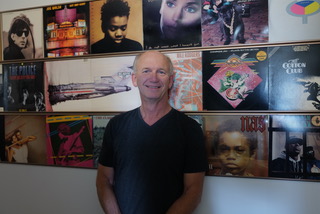
What does it mean to be a “mastering engineer”?
Mastering is a very specialized craft. All mastering engineers are audio engineers…but not all audio engineers are mastering engineers. We choose different specialties – much like doctors. The tools are the same, the difference is the operator’s perspective. Mastering is a very precise and we have an objective viewpoint. A typical artist might make 2 or 3 records in one busy year. A producer may produce 2 or as many as 5 recordings in one year. A mix engineer might mix 10 album-length projects in a year (sometimes more). But as a mastering engineer – I personally master over 400 album-length projects every year. That collection of experience, skills, and repetition gives a dedicated mastering engineer a very different perspective to really answer the question, “How does this project sound?”
Mastering or remastering is a phrase often used, but often misunderstood. At times, remastering means nothing more than “new and improved ” like on a box of laundry detergent… but the art of what I do is what brings me to the studio every day: to work on other people’s art (music) and to help that music be the best it can be. Mastering is the last creative step and the first manufacturing step when making a physical or virtual record for sale.
Let me back up and describe how a modern song and record are made.
First, the Artist gets an idea for a song – and either through their own finances or through a record label – they decide to make a record. That Artist often, but not always, arranges to work with a Producer. The Producer is supposed to be someone with more experience and connections. Working together, the Artist and Producer can make a more commercially viable record or a more culturally diverse record if that is the goal. The Producer locates a recording studio where the music is going to be captured. This often involves several support musicians or a band. These recorded performances are then edited and enhanced (fixed/corrected/embellished) depending on the standard of that style of music. Then, an audio specialist called a Mixing Engineer is hired to create the ultimate mix – or blend – of all of these sounds to create the arrangement we hear when we listen to the song. Some styles of music will have different Mixers add their own special touch or technique – you might even find several alternate mixes created, especially in dance/club music, where it’s fun to combine a lot of different elements into a new production.
Finally, when the mixing is done, and all of the songs on the record are nearly ready for the public… I’m called in to aid in the final assembly and mastering.
To be completely honest, the mastering of an album can be as simple as editing the songs together into a cohesive album, or it can be as complex as spending weeks going over the tiniest details until all of the artists, producers, and record label executives are happy. In general, I work with an album project only for a day or two. My role is to provide objectivity, and a very wide view. The producer has often struggled with every minute detail before bringing the mix to me. But for me it’s an opportunity to have a first reaction. I’m often thinking about how this song today compares with the thousands of other songs I’ve mastered over the years. Is it loud enough? Is the bass strong, is it muddy, is it weak? Is it missing some important embellishment that maybe they didn’t have time for, or simply forgot? Will a fan of this style of music appreciate the way this record sounds?
My role is very much like an advisor or consultant, who looks over your plan or drawings and spots things that were missed, overlooked, or never considered. The experience of bringing an album into my studio to be mastered has been compared to a final exam or report card. In my environment, we can no longer say, “It’s ok, we’ll fix it later” – there is no later. After the music has left my studio, it will be in the public’s hands and ears; played as a digital stream, on a car radio, as in-store music, on someone’s phone, or from a turntable as a vinyl record.
Sometimes I like to compare mastering work to a job like a copy editor or a photo retoucher. These people don’t really create the art or the book or the image, but they can have a profound impact on the user experience. A poorly written book or a badly edited photo won’t have a positive impact on the reader or viewer. It’s the same with music, but it can be even harder to express what it is we are actually changing when we master the music. There are many different opinions on this matter. To some “remastering” can change asthetic details which might frustrate fans of the original, while at the same time making the music potentially more accessible to a new audience.
Mastering, as a skill, is nearly identical to all other audio engineering skills. We use our ears to make judgments, playing the music over speakers in a highly refined listening room. Our tools are level controls, equalizers for tone, and compressors for controlling the dynamics. But how we use these tools and how we use our ears make up the differences between an audio engineer at a concert venue, or at a television studio – or in a mastering room.
The Song/Record making process in short.
- A song is created by a solo artist or by a band.
- Someone decides to spend some money on making a record.
- A recording studio is hired – and often a producer is hired to help with making the record.
- Each sound and each instrument part is recorded – usually one sound at a time.
- An engineer edits and manipulates these sounds to create an arrangement of the song.
- A mix engineer takes these tracks and crafts the song that we hear.
- Then those songs are brought to me (as a mastering engineer) for final review, editing, fixing minor glitches and errors, and helping the producer make those final decisions about tone and level.
- After mastering the song is sent up to the internet for streaming, or is sent to a CD or vinyl pressing plant to make physical copies for sale.
You’ve been mastering for nearly 40 years – How did you get your start?
To learn the basics of audio recording and engineering, I auditioned and applied to Sound Recording Technology program at SUNY Fredonia in Western N.Y. To be admitted into this program you have to be accepted as a music major – I played trombone. I didn’t know it at the time, but that was the easy part. I had been a part of the Arlington High School music program in Lagrange (Dutchess County), which gave me an excellent starting point. While at Fredonia, I performed with nearly every ensemble on campus: Orchestra, Concert Band, Festival Choir, Jazz Ensemble, Wind Ensemble, and many small ensembles with brass instruments. A recording I co-produced of the Fredonia Jazz Ensemble won a Down Beat Magazine award for best collegiate jazz ensemble recording. That was in 1983.
The recording technology department at Fredonia had two recording studios and each of the concert halls were wired to allow for recording. I made recordings day and night for 4 years. I’m not exaggerating. Since each one of the 25 engineering students in each grade needed to get practical time in the studio, the studios were open 24 hours a day. On any given week you might draw a 4 pm session time or a 4 am session time. And you needed to find musicians willing to come into the studio with you at those crazy hours. It turns out that that experience prepared us perfectly for the real world of the music business.
When I was a junior in this program, the Chief Engineer of Masterdisk came to Fredonia to speak to the recording students and gave a lecture to the student body about his role in the music business, and the artists and labels that he worked for. That summer I applied for an internship at Masterdisk – and the rest is history.
I interned for the summer, completed my degree, then came back to Masterdisk to start full-time in a role that hadn’t even been invented yet. I was told, “We like you, but we don’t know what you will actually do, but we’ll give you 3 months to try to figure it out.”
Digital audio was just introduced in 1985, and as the “new kid” in the studio, I had the desire and the time to figure out how to use this completely brand-new technology. Remember, at that time 100 percent of all of our work was on analog recording tape destined for vinyl records.
I made the most of that opportunity – worked incredibly hard and long hours – and some ten years later, I had my first opportunity to declare to the world that “I Am A Mastering Engineer” – and see if anyone would listen. This was a very busy time, CDs were just starting to sell, and soon the music world would be consumed with “REMASTERING”. In 1994 I was promoted to Chief Engineer, and in the next few years, I mastered projects for Donald Fagan, Shawn Mullins, Herbie Hancock, Garbage, Mathew Sweet, David Sandborn, David Byrne, Meatloaf, and the list goes on and on and on.
After working for Masterdisk for 15 years – I decided I’d do better on my own. I needed to build my own reputation outside of the big-name brand, and while working at Classic Sound and The Hit Factory in N.Y.C., I made several big records over the next 7 years. To name a few, John Mayer’s Rooms for Squares, Steely Dan’s Two Against Nature (and Sunken Condos, a solo record by Steely Dan lead singer Donald Fagan), Nelly Furtado’s Whoa, Nelly!, Garbage’s Version 2.0 and Beautiful Garbage, Sting’s Symphonicities and The Last Ship and The Best of 25 Years box set. In 2008 things were changing for me, and even though they say you can’t go back home, I did. I went back to Masterdisk and took over the space on 45th street – as the new owner and Chief Engineer. This went better than planned for a while until changes in the music industry and real estate on the West Side of Manhattan forced my hand. In 2014 my lease was up and I was told my rent would triple. There was no way to continue as a mastering studio on West 45th Street. I looked around for a new home and decided it was time to “right size” my business. Since I had been commuting from Yorktown for 30 years I thought, maybe it would be nice if my clients came to me instead. The Atrium at Charles Point in Peekskill had the space I needed and was convenient to the Metro North train line. This has since been the home of Masterdisk Studios. It’s a smaller operation now with 4 employees and three studios, but it’s right-sized for the music business, and I now have a 10-minute “commute” to the studio.
Who are some of the most famous bands or albums you’ve worked with?
Masterdisk began in 1978 as an independent mastering studio that worked with every label and every style of music. It’s impossible to list all of the artists and albums that have hired Masterdisk for the past 50 years. But I’ll try nonetheless.
In no particular order… Bruce, Sting, Bono, Swift, Sting, Ozzy, Miles Davis, John Mayer, Steely Dan, Jimi Hendrix, Naz, ZZ-Top, Barbra Streisand, Whitesnake, Jay-Z, Yoyo Ma, AC-DC, Lou Reed…( and hundreds more “big” names…. ). The “list” that I have created on my website tries to tell the story – but we are talking about tens of thousands of albums over 50 years – mastered for Vinyl, CD, DVD, Streaming, Cassette, TV, Music video, and for whatever the next technology will be.
What was the album that was most fun to master or work on? Why? Who was the artist?
I like to say that all of my work is fun…. But all the fun is also work! It’s novel to get to work with an artist that you once idolized, and at the same time – for me – it’s just another record. But I have to say in general the calibre of the artists and performers that I hear every day is truly astounding. I can’t put that awe and passion into words.
Masterdisk also cuts (creates) vinyl disks. What’s the process of actually creating a vinyl album?
Masterdisk is one of only about a dozen facilities worldwide that has been making vinyl records continuously since the 70s .
Some records today are made using automated and less expensive processes. You might notice that some vinyl records don’t seem to sound special. But that is not my process. A Masterdisk cut record is made by hand, through an exacting process, using the best tools and equipment available.
The results should speak for themselves. A record that is marked with the Masterdisk stamp means that it was expertly crafted for the best possible results.
I try to explain the process and extoll the virtues of mastering and vinyl cutting on my blog and on my podcast “Making Vinyl at Masterdisk”. There are hundreds of hours of audio and video – and we are adding more every week.
There isn’t a simple way to describe the process. Audio is electrically converted into a groove using a disk cutting lathe. The “squiggles” of that groove are a direct analog to the sound. When it’s played back with a phono cartridge (a record player), those squiggles generate a small electrical audio signal that when amplified, sounds remarkably similar to the original audio that we started with. It’s magic and it’s just physics. And the more you learn about the process, the more magical it seems.
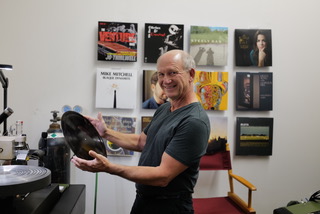
What machinery do you use and how? And how does new recording technology interface with the vinyl record?
For me, the gear is the least exciting part of what I do. Truly it’s amazing gear – much of it was built in Germany to extremely exacting standards and still working almost flawlessly 50 years later… But… as soon as we think that the gear is great, we forget about the hands and the minds and souls that make the music. Every day is a string of a few hundred thousand decisions – tiny little decisions where I use my instinct and experience to guide each production to it best place. Not unlike a painter or dancer or musician. Those decisions and the ears and years that I come with are what make my clients’ work great and are behind all of Masterdisk’s work through 50 years. This work gives me joy every day.
I think any great mechanic or trade person would tell you – that while you need tools – the tools don’t make the important stuff easier or better… Great tools make great things possible.
Tell us about your podcast Making Vinyl @ Masterdisk. How did this project come about?
Music is storytelling. Even instrumental music. So telling stories about music seems to make a lot of sense.
Also, I like when I get together with some of my engineering colleagues – and we just talk shop. It’s a language only we understand fully, but I think it’s interesting for musicians, artists, and fans to get a little glimpse behind the studio glass – to hear what we talk about. That is, what is important to us and how we get through our day – “taking care of business” like the BTO song from the 80s.
I’ve done these conversations before as public events – usually at college campuses. But now we can record and publish these conversations for all to hear across the internet. My central idea was, if I’m curious about the topic then maybe others are curious too. I thought it would last for about two weeks… but people have asked for more – so that’s what we do. We are always looking for topics and questions from our listeners who help us decide what to talk about next.
What’s the one thing you want people to know about vinyl?
There is a lot written about vinyl and a ton of vinyl users and enthusiasts talking about vinyl records from all sides. My one most important consideration is to use your OWN ears to make up your mind about vinyl. If you like to listen to records – you don’t need any other reason than that. And if you don’t like to listen to vinyl, that doesn’t mean that vinyl lovers are misinformed or too old fashioned. To some, the experience of listening to vinyl is lovely and fascinating. Analog and digital music formats exist to please different audiences. For those who haven’t yet experienced records, try to slow your life down long enough to listen to a complete side of record without interruption. It’s only about 20 minutes but it just might seem so much more significant than listening to a continuous stream of random songs. I’m pretty sure you will discover something new in that experience.
How has the music industry changed during your 40 years as a mastering engineer?
I think we have to start by remembering where we were 40 years ago. There were no cell phones, no ATMs, no cable tv! No streaming, no digital cameras, no laptop computers, no CDs, no internet, no Google Search, and certainly no Youtube. So with that perspective…
The music business back then was about making vinyl records and getting your song played on the radio. As an independent mastering studio we worked with any artist in any genre that was signed to any record label, or had no label affiliation. We never had financial ties with any studio or label. We were chosen usually by the artist or producer, often over the label’s own mastering services. We had to be better. If anything could be better, sound better, look better, be faster, more reliable, or more creative – we did it that way.
Today, that drive for greatness remains. But the music industry that we work with every day is on a different scale altogether. We work with labels of course, but a large portion of my work is with independent musicians, producers, and smaller labels that want to be known for sounding amazing, and not just for having a loud compressed, and pop sound. I work on music styles that many would call fringe or avant-garde, but at the same time have all the skills necessary to make a modern pop/rock/rap or hip-hop or classical record. I personally get a lot of enjoyment out of working on different styles of music projects every day. They challenge me musically, technically, and emotionally, and cause me to (allow me to) re-invent myself nearly every day.
Also over the past 10 years, vinyl records have made a remarkable comeback. A large portion of my work at Masterdisk is for the creation of bespoke and extremely high-fidelity records. I master for and cut the masters for hundreds of records a year. Each one is a hand-crafted, personal experience, each one cared for and labored over to ensure it would sound great, look great, and be fun to hold and listen to.
What’s your favorite genre of music to listen to, and why?
I work on all types of music, from the most primal and guttural to the most intensely minimal. I can’t have a favorite. I’m a fan of my client’s music everyday. It’s essential I find that connection, as a fan, to what drives the artist to make their music.
When I’m not at work at the studio, the music (noise) around me is more often a Yankee game, or talk radio, or a table saw. Everyone needs some downtime.
You were born in Mahopac — growing up, did you spend much time in Peekskill? If so, where was your spot? How has Peekskill changed since then?
I didn’t have a lot of experience with Peekskill back in the 60s. Other than an occasional show at the Paramount.
But the change in Peekskill in the past 20 years has been steadily upward and remarkable.
I like that even while large cities throughout the U.S. were dealing with racial issues and riots, Peekskill remained as I have always seen it. It’s a cultural melting pot in the best possible way. Diversity and compassion, not because they are today’s buzz words, but because our kids live and play here together. And we are creative and artistic and I think we really care about each other, not just the people that look like we do.
Where’s your favorite place to go to in Peekskill now and why?
That’s a hard question… I’m at the riverfront everyday. The walking path to the train, on a small boat on the river, or in one of several waterfront parks. I’m often at the train station, hopping a ride to Midtown, or picking up a client for the day’s session.
First though, I’m a musician and artist, and I love there is live music – all the time, in many venues – in the South Division street area, as well as across the street from my studio at Charles Point and the River Outpost outdoor venue. We do music very well in Peekskill.
What would you like to say to the Peekskill community?
Thanks Peekskill! I was made to feel like I belonged here… from the moment I got an apartment and moved my business here. I give that hometown feeling back every time I get an opportunity.
Scott Hull is a master engineer and the owner of Masterdisk Studios, located at 8 John Walsh Blvd, Suite 411.




